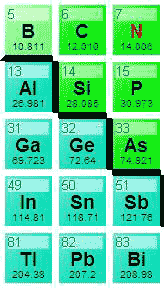In the burgeoning field of modern photonics and semiconductor technology, the concepts of optoelectronics and silicon photonics are frequently discussed, often interchangeably. However, a nuanced examination reveals that while they share overlapping domains, they are not synonymous. This discourse will elucidate the fundamental distinctions, underlying principles, and the evolving interplay between optoelectronics and silicon photonics, ultimately shedding light on their unique contributions to technological advancements.
Optoelectronics encompasses the study and application of electronic devices that harness and manipulate light, integrating photonic and electronic systems. This interdisciplinary field is pivotal in the development of lasers, light-emitting diodes (LEDs), photodetectors, and optical communication systems. One of the hallmark characteristics of optoelectronics lies in its capability to explore the interaction between photons and charged particles, enabling a plethora of applications ranging from telecommunications to consumer electronics.
In contrast, silicon photonics is a subfield of photonics that utilizes silicon as a primary medium for light manipulation and generation. Silicon photonic devices leverage the advantages inherent to silicon’s optical properties—most notably its compatibility with existing semiconductor fabrication techniques, relatively low cost, and significant integration potential with electronic circuits. By using silicon as a platform, researchers strive to develop photonic circuits that can seamlessly interface with electronic systems, thereby bridging the gap between optical and electronic functionalities.
A crucial differentiation between the two realms is their respective scopes. Optoelectronics is broad in its application, encompassing various materials such as gallium arsenide (GaAs), indium phosphide (InP), and organic materials, while silicon photonics specifically focuses on devices fabricated from silicon and its alloys. This narrower focus in silicon photonics allows for innovations such as integrated photonic circuits that can be produced using the same processes that govern conventional electronic device fabrication—a significant advancement in design efficiency and manufacturability.
The principles of operation also diverge in notable ways. At the core of optoelectronics lies the phenomenon of electroluminescence, where electronic transitions in materials lead to photon emission. This is evident in devices such as LEDs and semiconductor lasers, which generate light directly through electronic excitations. Silicon photonics, on the other hand, primarily capitalizes on waveguide structures for transmitting light. This entails confining light to propagate through silicon waveguides, utilizing total internal reflection, and employing photonic crystal structures to enhance light manipulation at the nanoscale.
The integration of optoelectronics with silicon photonics heralds a sublime confluence of functionalities, as silicon photonic devices can employ optoelectronic components to enhance their operational capabilities. This interdependency fosters a plethora of applications, particularly in the realm of high-speed data communication. By combining optical signals’ rapid transmission capabilities with silicon’s processing prowess, silicon photonics emerges as a formidable solution for bandwidth-intensive applications, such as data centers and optical interconnects.
Moreover, the advent of silicon photonics promises a paradigm shift in the design of next-generation computing architectures. As the demand for faster and more efficient data processing escalates, the need to incorporate optical interconnects becomes paramount. Silicon photonic chips aim to facilitate the transfer of data with minimal latency while reducing energy consumption, thus addressing the critical limitations faced by conventional electronic interconnects. The confluence of optoelectronics and silicon photonics is pivotal in realizing the full potential of light-based computing systems, which may ultimately eclipse the performance characteristics of electronic-based circuits.
From a materials science perspective, the exploration of hybrid structures further blurs the lines between optoelectronics and silicon photonics. Innovative approaches involve integrating materials with distinct photonic properties into silicon-based platforms, creating devices that not only maintain the advantages of silicon but also exhibit enhanced optical behaviors. Such hybrid devices potentially unlock new functionalities, paving the way for advancements such as quantum photonics, where quantum states of light (photons) are manipulated for applications in quantum computing and cryptography.
Furthermore, the commercialization trajectory of these technologies illustrates divergent challenges and opportunities. While optoelectronic devices have a well-established presence in market sectors such as telecommunications and display technologies, silicon photonics remains in a relative state of nascent commercialization—albeit rapidly gaining traction. The ongoing research investments and heightened interest from academic and industrial stakeholders indicate a strong anticipatory shift towards the incorporation of silicon photonics in mainstream applications.
Future research and development will undoubtedly be guided by the pursuit of overcoming existing limitations in both fields. For optoelectronics, enhancing device efficiencies and operational lifespans remains critical. In contrast, silicon photonics researchers are tasked with refining waveguide designs to minimize propagation losses and improve thermal management—challenges that will shape the competency of future photonic-integrated circuits.
In summary, while optoelectronics and silicon photonics engage in a complementary relationship, they are distinct entities with unique characteristics and domains. Together, they represent an exciting frontier in engineering disciplines, one that necessitates an interdisciplinary approach to unlock the vast potential of light-based technologies. As these two realms continue to evolve, they promise to redefine the landscape of electronic and photonic systems, inviting curiosity about the future of communication, computing, and beyond.










